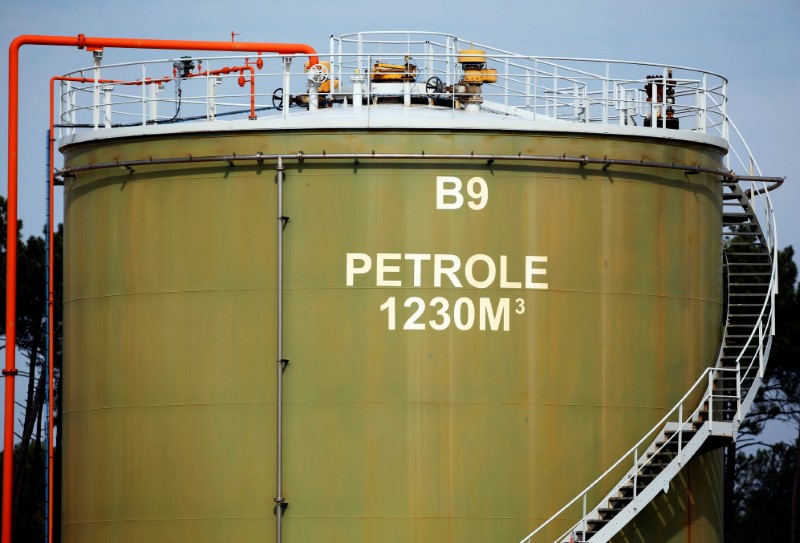By Aaron Sheldrick
TOKYO (Reuters) - Oil prices fell for a sixth day on Friday after Iran announced plans to boost production and U.S. crude output hit record highs, adding to concerns about a sharp rise in global supplies.
The falls come amid a rout in global share markets as inflation fears grip investors.
Brent futures were down 44 cents or 0.7 percent, at $64.37 a barrel by around 0700 GMT. On Thursday, Brent fell 1.1 percent to its lowest close since Dec. 20.
U.S. West Texas Intermediate (WTI) crude was down 62 cents, or 1 percent, at $60.53 a barrel, having settled down 1 percent in the previous session at its lowest close since Jan. 2.
Both contracts have fallen more than 9 percent from this year's high point in late January.
"Bets on further rising oil and metals prices, for example by hedge funds, have climbed to excessively bullish levels," said Carsten Menke, commodities research analyst at Swiss Bank Julius Baer.
"We see oil prices dropping towards and below $60 per barrel," he said.
OPEC member Iran on Thursday announced plans to increase production within the next four years by at least 700,000 barrels a day.
Meanwhile, the U.S. Energy Information Administration (EIA) this week said crude production last week rose to a record high of 10.25 million barrels per day (bpd).
At that level, U.S. production would overtake the current output in Saudi Arabia, the biggest producer in the Organization of the Petroleum Exporting Countries (OPEC).
OPEC and other producers, including Russia, have cut production since January 2017 to force down global inventories, but these cuts have been offset by rising U.S. oil production.
China plans to launch its long-awaited crude oil futures contract on March 26, two sources familiar with the situation said on Friday, a move that will potentially shake up the pricing of the world's largest commodity market.

The launch next month will mark the end of a push to create Asia's first oil futures benchmark, which would give China more clout in pricing crude in the region and a share of the trillions of dollars in the oil futures trade.